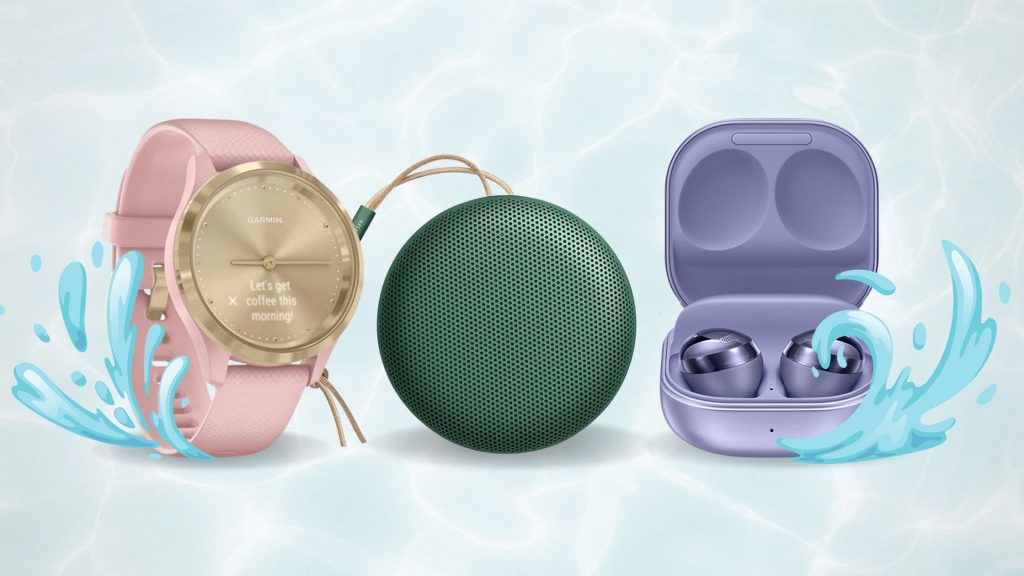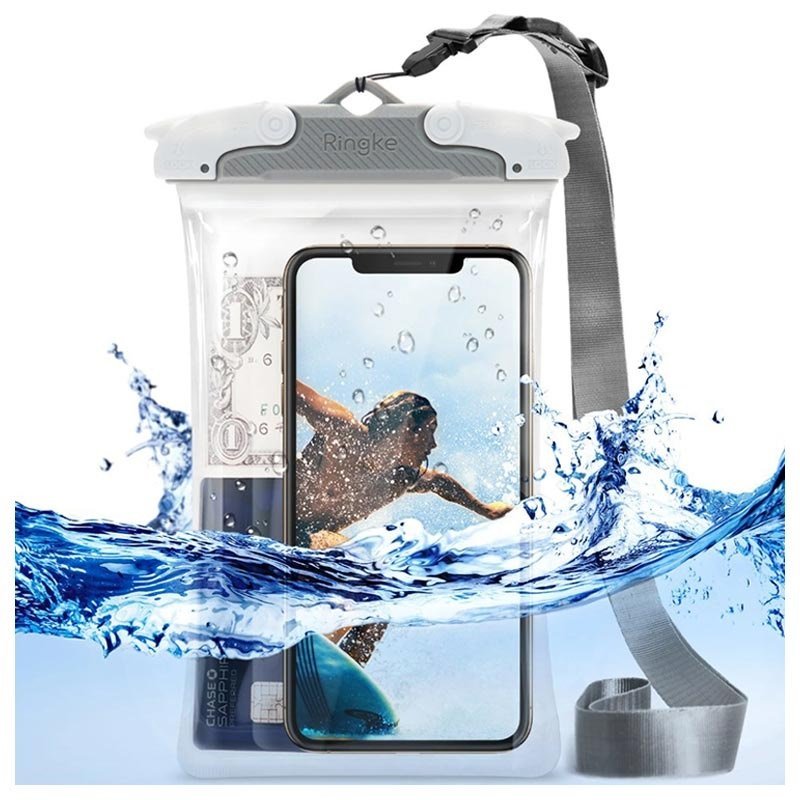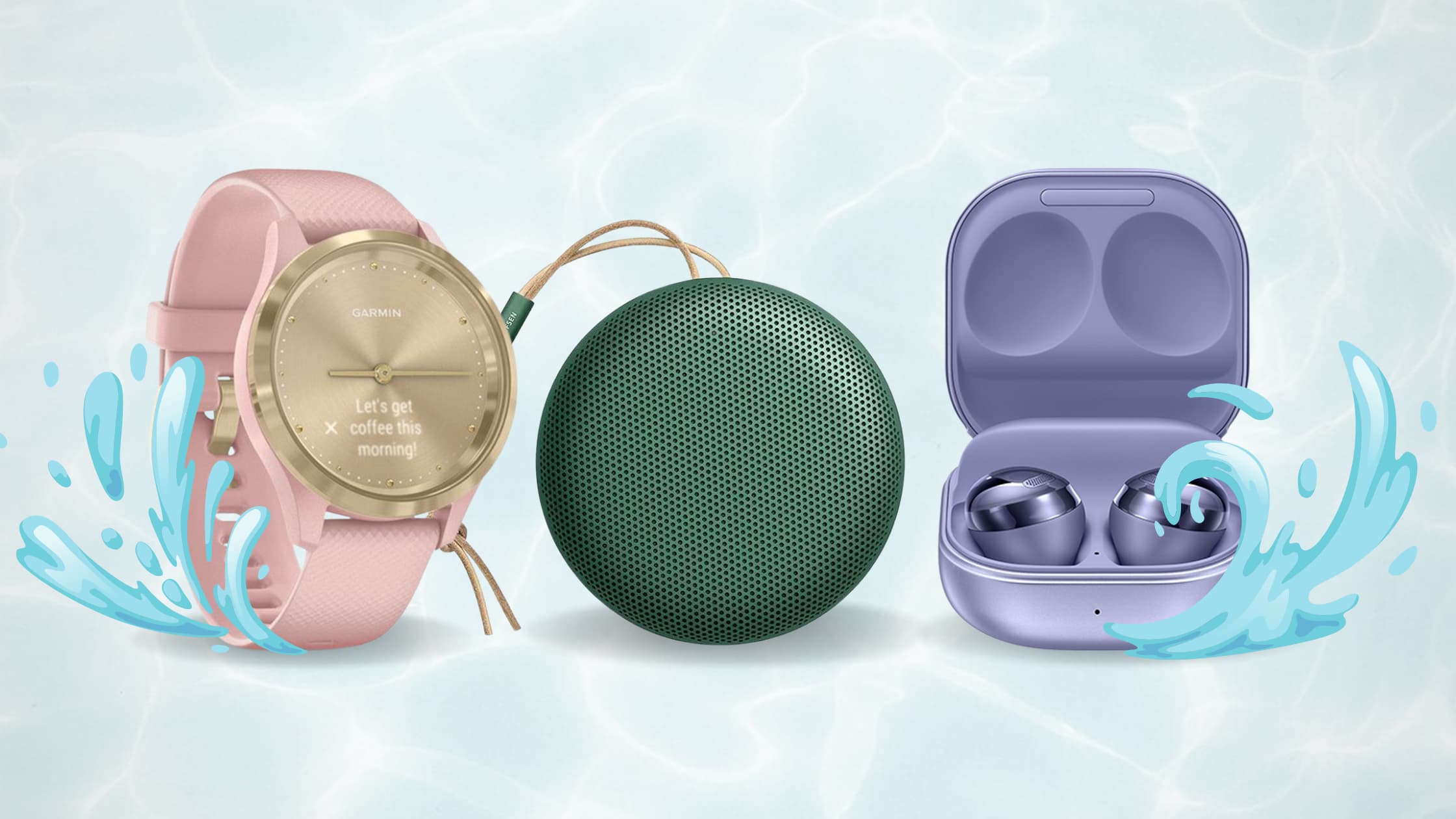
In everyday life, your smartphones and other daily used gadgets are exposed to the elements. A workout with your favourite headphones, it’s them against sweat damage. Are you going out camping and off the grid? You are likely to carry a power bank that will withstand any type of weather.
Most of the electrical workings of your devices are enclosed in some form of casing. These help prevent the entry of foreign objects, like dust and moisture. Additionally, the enclosures also ensure that you do not accidentally harm yourself on the internal moving parts or wiring whilst also protecting them from external elements.
Whilst visual inspection only allows you a superficial view of the protective capabilities, certifications and industry standards are the way to go when you need assurance. You might have come across products like smartwatches and Bluetooth speakers boasting about their IP certifications. These codes are often accompanied by words and phrases like water-resistant, dust and splash-proof, and immersion resistant up to 1m for up to 30 minutes.
To a layman, the IP codes or ratings do not mean more than what the product description states. However, a waterproof case might just be water-resistant up to a certain limit within a defined period. Your wireless earphones that promise to be water-resistant with their IP-56, could be lying to you about their certification.
Making the right decision and protecting yourself from cheap, counterfeit products requires knowledge and understanding of these codes and ratings. The IP codes are international standards with global acceptances for the degree of protection provided by the enclosures or cases of your electronic devices.
In this post, you will learn what the IP codes and ratings mean and how to differentiate a fake IP rating from a real one. You will also learn about the tests your device has undergone to receive the rating for protection against water ingression.
What is the International Electrotechnical Commission?
Certifications and product standards allow you to make the right purchase with confidence. The International Electrotechnical Commission (IEC) is one such organisation that covers a wide range of technological international standards.
It is a non-profit and non-governmental organisation responsible for setting international standards for electrical technologies. They prepare and publish international standards for electrotechnology, which is a collective term used for all electrical, electronic and related technologies.
The IEC was established in London and eventually moved to Geneva in 1948, where it has set up its current headquarters. This international standard commission also has its centres worldwide, including the United States of America in the city of Boston, Singapore, and Brazil.
Their first publication, in the year 1938, aimed to unify terminology relating to electrical, electronic and related technologies. This international vocabulary was published in multiple languages. The International Electrotechnical Vocabulary, along with its online version, known as the Electropedia, continues to be of great importance for the electrical and electronic industries.
The International Electrotechnical Commission also works in close correspondence with the International Organisation for Standardisation (ISO) and the International Telecommunication Union (ITU).
What are Ingress Protection Ratings or Codes?
The Ingress Protection or IP ratings and codes are a system of classification published by the International Electrotechnical Commission under IEC standard 60529. This classification is a measure of the degree of protection offered by a case, or an enclosure, against entry of foreign bodies or items into it.
The IEC standard 60529 is an international standard, while the EN 60529 is the British standard. IP ratings are categorised to inform you of the level of protection your devices come with against the harmful effects of foreign objects, dirt and moisture.
Interpreting the IP Codes: Breaking Down the Rating Syntax
Before we get to the IP rating chart, it is important to understand the elements of the IP codes and what they stand for.
An IP code consists of five elements, two of which are optional. The following table gives you a quick overview of what each part signifies.
| IP | First Digit | Second Digit | Additional Character | Supplementary Character |
| International Protection/Ingress Protection(Mandatory) | Numerals 0 to 6, or the letter X(Mandatory) | Numerals 0 to 8, or the letter X(Mandatory) | Letters A, B, C or D(Optional) | Letters H, M, S or W(Optional) |
The IP codes are always written with the first two characters being IP, which is followed immediately by two digits and two optional letters. The code will never have hyphens or any other punctuation mark. This is one way of knowing whether your gadget or device has undergone the appropriate tests to get the IP certifications.
Here is a breakdown of what each part of the code represents.
- First digit: The digit immediately following IP stands for the level of protection against the ingress of solids and access to hazardous parts by persons. It can only be between numerals 0 to 6. An X is placed when no information is available.
- Second digit: The second digit informs about the protection against the ingress of water. It can only be between numerals 0 to 8. An X is placed when no information is available. The numeral 9 is also used for enclosures that can withstand high-pressure and high temperatures.
- Additional letter: The first letter following the numerals determines the protection of a person against access to hazardous parts. It is an optional rating and only uses the letters A, B, C, or D.
- Supplementary letter: The last letter is yet another optional rating. It informs about the protection of equipment against specific threats. Only the letters H, M, S or W are used for this.
A higher numeral digit or letter means higher protection. It also means that the lower categories of protection are usually met by the enclosure or device with a higher IP rating. The letters are usually not used for smaller gadgets like your smartphones and smartwatches.
IP Rating System: A Detailed Look at the IP Rating Classification
In this section, we provide you with a detailed description of what each part of the IP code or rating means. This understanding will help you use the IP classification to make an educated purchase the next time you need a gadget that fits in with your lifestyle needs.
First Digit: Level of Ingress Protection Against Foreign Bodies
| Letter or Digit | Protection of Device Against Ingress of Foreign Solid Objects | Protection of Persons Against Access toHazardous Parts |
| X | Not required | Not required |
| 0 | Not protected | Not protected |
| 1 | Protected from objects greater than or equal to 50mm in diameter | Hazardous parts cannot be accessed by hands; however, no protection against deliberate contact with the body |
| 2 | Protected from objects greater than or equal to 12.5mm in diameter | Hazardous parts cannot be accessed by fingers or items of objects of similar sizes |
| 3 | Protected from objects greater than or equal to 2.5mm in diameter | Hazardous parts cannot be accessed by wires or tools of the mentioned size |
| 4 | Protected from objects greater than or equal to 1.0mm in diameter | Hazardous parts cannot be accessed by wires, screws and large ants/small insects of the mentioned size |
| 5 | Protection against dust as long as exposure is not with too large a quantity | Hazardous parts cannot be accessed by wires, screws and large ants/small insects of the mentioned size |
| 6 | Dust-tight protection | Hazardous parts cannot be accessed by wires, screws and large ants/small insects of the mentioned size |
Second Digit: Level of Ingress Protection Against Moisture
| Letter or Digit | Protection Of Device Against Ingress of WaterWith Harmful Effects | Testing Performed |
| X | Not required | Not required |
| 0 | Not protected | Not required |
| 1 | Protected from vertically falling dripping water when mounted in an upright position | Tested for 10 minutes with water equivalent to rainfall falling at 1mm per minute |
| 2 | Protected from dripping water at 15 degrees tilt in all four positions | Each position is tested with tilt for 2.5 minutes with water equivalent to rainfall falling at 3mm per minute |
| 3 | Protected from spraying water for up to 60 degrees from the vertical position | The device is tested with a spray nozzle spraying water at 1 minute per square metre for at least 5 minutes. Additional testing also performed with an oscillating tube for 10 minutes |
| 4 | Protected from water splashes from any direction | Tested for 10 minutes with water splashing from all directions |
| 5 | Protected from water jets from a nozzle of 6.3mm | Tested with water jets spraying 12.5 litres of water per minute, 1 minute per square metre and also at a pressure of 30 kPa from 3 metres |
| 6 | Protected from powerful water jets from a nozzle of 12.5mm | Tested with water jets spraying 100 litres of water per minute, 1 minute per square metre and also at a pressure of 100 kPa from 3 metres |
| 7 | Protected from submersion for depths up to 1m | Device submerged for 30 minutes at 1m depth |
| 8 | Protected from submersion for depths of 1m or more | Testing manufacturer specific |
Additional and Supplementary Letters
| A | Back of hand |
| B | Finger |
| C | Tool |
| D | Wire |
| Protection of Device-Specific to | |
| H | High voltage apparatus |
| M | Motion during water test |
| S | Stationary during water test |
| W | Weather conditions |
Water Resistant or Waterproof? Is There a Difference?
Everyday coffee runs or gym workouts can lead to some accidental contact between your devices and moisture. And, whether your device is water-resistant or waterproof might just make a difference. Though these two terms are quite similar in their meanings, they are not the same.
The most sought-after attribute amongst gadgets is their protection from water and moisture. If you look at Apple products, like their AirPods Pro or their newer iPhone, you will see the waterproof feature highlighted.
Though waterproof should mean complete water resistance, that is not the case with many of your everyday gadgets. Water-resistant gadgets can resist water ingression to a certain degree, but not 100%. For example, a device with an IP67 waterproof rating can handle temporary immersion in liquids between 15cm and 1m in depth.
Since it is unlikely that you would dive into a pool with your iPhone or your waterproof Bluetooth speaker, most levels of water ingression protection is sufficient for the average person.
However, some gadgets are specifically designed for underwater activities. Devices like smartwatches are often companions of people who take their sports seriously. For such gadgets, look for their ATM rating, as well as their IP rating, to be sure they can handle water immersion and the duration of viable exposure.
Covers and Cases with IP Ratings

Covers for your devices or gadgets with water-repellent features usually have surface coating that makes the entry of water difficult. Even with a water ingression protection rating of 8, your devices are not meant to handle prolonged exposure to moisture. Therefore, an appropriate waterproof case or cover is the way to go.
The concrete jungle lifestyle does not require high-pressure, high-temperature withstanding cases. But a lifestyle that thrives on challenging the elements might need one. The enclosure IP rating of 6K or 9K is best suited for environments with harsh demands.
However, the letter K rating does not belong to IEC 60529 standards. Tests for the letter K are defined by ISO 20653 (replacing DIN 40050-9). But a case with an IEC rating of IPx9 will provide you with the same protection as an IP69K rated case since they go through the same water test.
Products rated with 6K undergo testing with 75 litres per minute of water at a pressure of 1000kPa at a distance of 3 metres for at least 3 minutes. While the 6K testing only uses a powerful high-pressure jet, 9K testing is performed with powerful high-temperature water jets.
The 9K testing, which is the same as the IEC testing for IPx9, uses 14 to 16 litres per minute of water with pressure ranging from 8 to 10MPa at a temperature of 80°C at a distance between 0.10 to 0.15 metres. Small devices are usually fixed on a turntable, and each side is tested for 30 seconds. Larger devices are tested freehand at 1 min/m2 for at least 3 minutes.
Quick Overview of IP Codes/Ratings
Here is a quick scannable list to get the most essential details of IP ratings and how to make the most of them.
- IP ratings/codes are international standards for all electrotechnology. They inform you about the level of protection against ingression of dust, water and moisture.
- IP codes always start with the IP characters followed by two numerals. The additional two letters are optional and provide more information regarding protection.
- IP codes do not have any punctuation marks in them. For example, IP-66 is an invalid IP code.
- The first digit informs about protection against dust ingress while the second digit informs about water ingress protection.
- Ratings with higher numerals provide better protection. A rating with X suggests that that type of protection is not required. On the other hand, a 0 rating informs you there is no protection offered.
- While the letter K is not part of the IP rating, enclosures with a rating of 6K and 9K offer protection against high-pressure water jets. Devices with 9K are also protected against high-temperature water jets.
- An IEC rating of IPx9 will provide you with the same protection as an IP69K rating.
- Despite having the highest protection as per the IP code, most devices are not meant to be submerged into liquids. Look for the appropriate ATM code/rating for gadgets designed for use under the water.
Armed with Knowledge
Knowledge is power and, as a consumer, accurate knowledge will help with making the right choices. Now that you have learnt what IP codes reveal about the protection offered to you and the internal parts of your devices, your next purchase will not disappoint you.
Are you looking for more useful information? Subscribe to us, or get in touch to learn how to be a smart consumer

